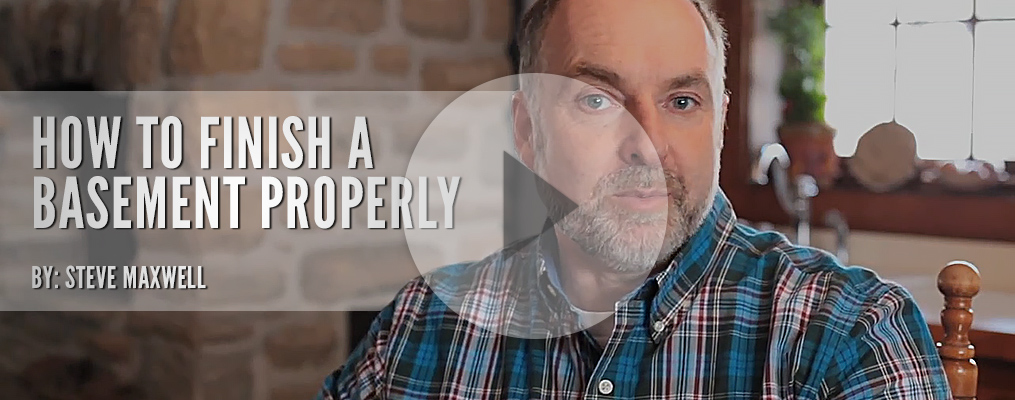There’s no easier way to increase living space in your current home than by developing your basement, but traditional finishing methods may be undermining your project— especially if you have more enthusiasm than experience.
“In my experience, traditional systems can set the stage for hidden mold growth, poor energy performance, and even low indoor air quality throughout the rest of your home” a home improvements expert whose website, baileylineroad.com, is a go-to resource for amateur and professional builders alike. “Not every basement finished in the usual way will result in these problems, but DIYers without a lot of experience are particularly prone to experiencing some of these pitfalls.”
A traditional basement wall finishing system typically includes stud frame walls, fibre insulation and a vapour barrier. For inexperienced handymen and women, the multi-step installation process for these systems itself alone increases the opportunity for error.
Before renovating your basement, make sure you’re aware of how these methods can leave your new space vulnerable, especially during the wettest seasons. Here are some ways to protect your basement against moisture pitfalls.
Moisture: The Usual Suspect
Pitfall #1: Fibre-insulated stud frame walls are particularly vulnerable to both liquid and water vapour. It’s not unusual for this type of insulation to get damp or even wet. When it does, “It is just like sealing a used bath towel in a plastic bag: mold and mildew are inevitable,” says Steve Maxwell. Even seemingly dry basements can allow water vapour to pass through masonry foundation walls, collecting inside sealed, stud frame wall cavities during warm weather.

Foam wall systems offer a great alternative when it comes to helping create warm, dry, and durable basement spaces. The DRICORE SMARTWALL® system is made of 3.5 inch thick expanded polystyrene foam and 0.5 inch thick drywall, delivering an R-17 insulation value. These panels are highly resistant to moisture because they contain no sealed wall cavities. Their all-in-one construction effectively combines several steps into one.

Pitfall #2: Aside from being cold on your feet, and providing almost no cushioning, carpet, and underlay applied directly to concrete floors can encourage condensation to accumulate during humid summer weather.

Consider an engineered subfloor system. These offer the best approach for creating warm, comfortable, durable basement flooring. Systems like DRICORE Subfloors have a high-density, textured plastic layer bonded to the underside of individual panels, creating an air pocket above the concrete. Besides providing air space, the plastic membrane also allows a small amount of leaked water to drain away if need be.
All types of flooring — LVT, engineered hardwood, laminate, carpet, ceramic tile and even stone —can be applied over subfloor systems, so you won’t need to sacrifice style for the sake of keeping dry.

Pitfall #3: If you want to renovate your basement, but anticipate potentially serious water problems (for example, you live in a particularly wet climate, or have a yard that slopes down towards your home), one sump pump will likely not be enough. If your basement has been converted into a beautiful and functional living space, don’t risk your valuables with just one sump pump.

Make sure you have at least two sump pumps, and that your backup pump can operate even when the grid goes down. When the power goes out – as it often does in a storm – a battery-powered sump pump can continue pumping for up to two days, depending on the demand. Installing two pumps is an upfront investment that will ensure your new basement stays protected during the harshest of seasons, so that you can enjoy it for years to come.
For more information and to see Steve Maxwell’s new how-to video, visit www.dricore.com.
